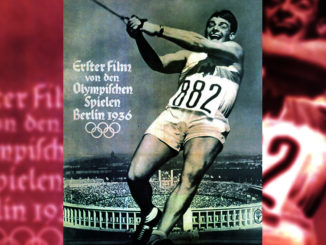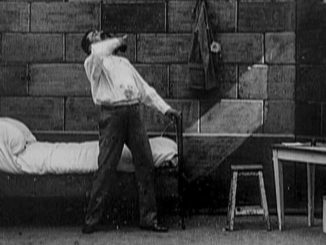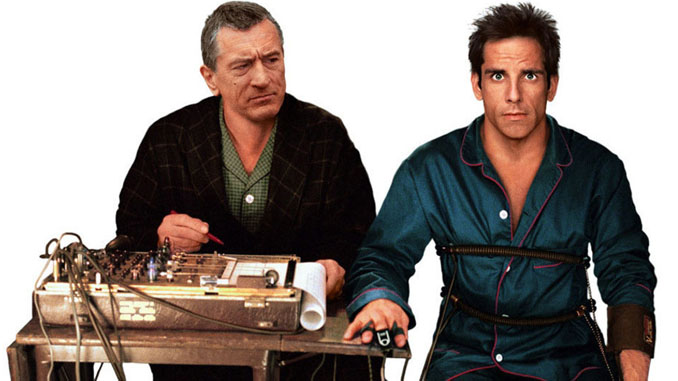
by Peter Tonguette • stills courtesy of Universal Pictures
Jack Byrnes, meet Greg Focker. Greg Focker, meet Jack Byrnes.
Jack, Greg is your new son-in-law, a young man who has chosen to pursue a career in nursing but lacks the finances (and fashion sense) of your daughter’s ex-significant other, Kevin.
Greg, Jack is your new father-in-law, a prone-to-anger former agent in the Central Intelligence Agency who has no patience for shenanigans of any sort.
Jack (Robert De Niro), Greg (Ben Stiller) and Kevin (Owen Wilson) — not to mention Jack’s daughter and Greg’s bride-to-be, Pam (Teri Polo) — are the leading characters in the comedy Meet the Parents, released by Universal Pictures to enthusiastic reviews and appreciative audiences in the fall of 2000.
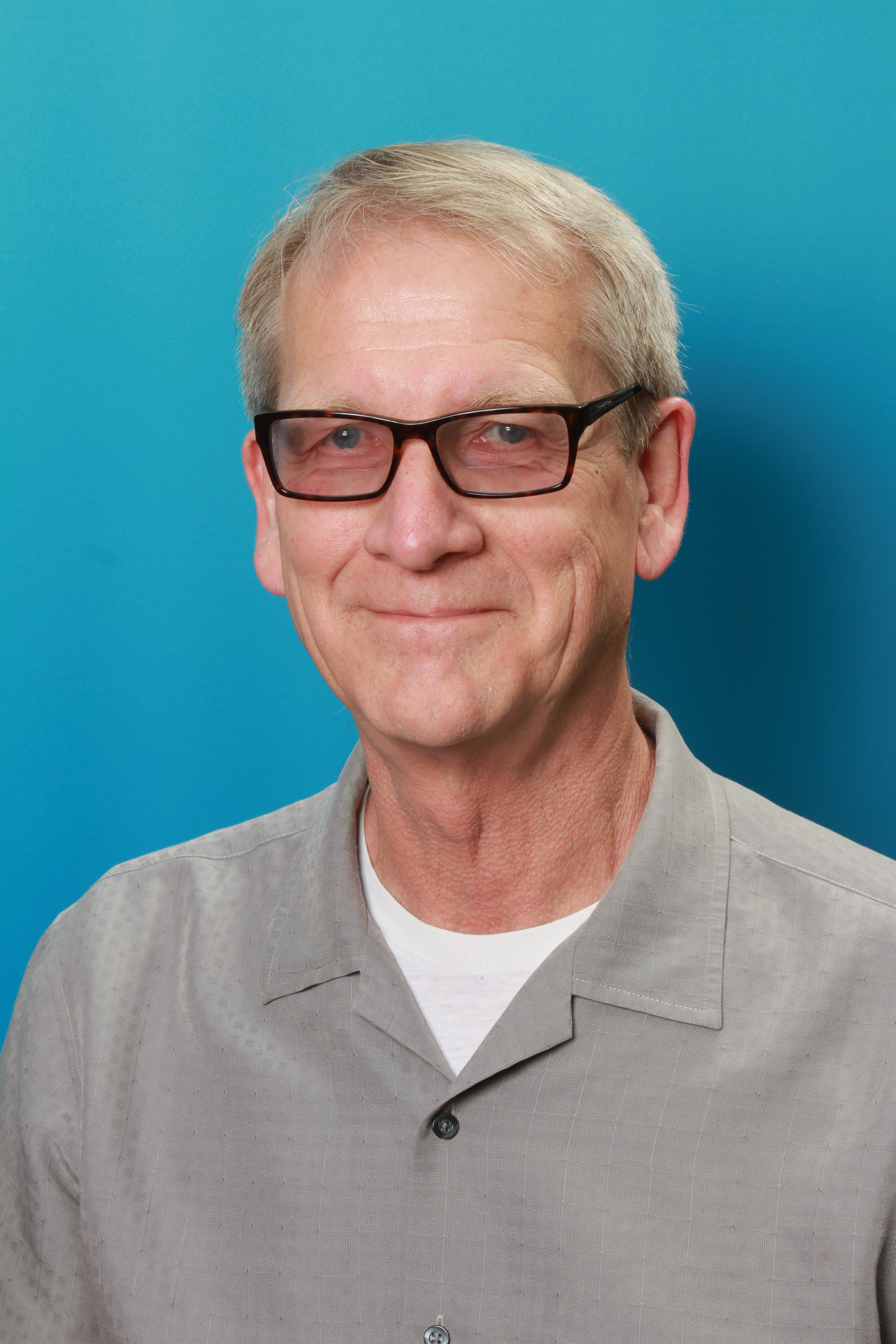
Yet the project went through a development process sometimes as awkward as a getting-to-know-you meeting between a bridegroom and his future in-laws…that is, until the screenplay “met” NBCUniversal story analyst Douglas Soesbe.
Meet the Parents began life as a low-budget 1992 film of the same title; director Greg Glienna co-wrote the original screenplay with Mary Ruth Clarke. Not long after, Universal Studios entered the picture, intending to produce a remake of the film on a grander scale. Through the years, assorted A-list directors flirted with the project without proceeding, as Glienna recalled in a 2013 interview on Wisconsin Public Radio. Steven Soderbergh was among the first to express interest.
“He called me and said this should be a big studio film; this is very commercial,” Glienna said. “Five years went by, it got a different director, and that’s Hollywood. We’d get reports that Jim Carrey was going to star in it, and Steven Spielberg was attached to it. It was a joke with my friends: ‘Oh, what’s going on with that Meet the Parents thing? Who’s involved in it now?’”
In fact, the project’s savior turned out not to be a director but an actor.
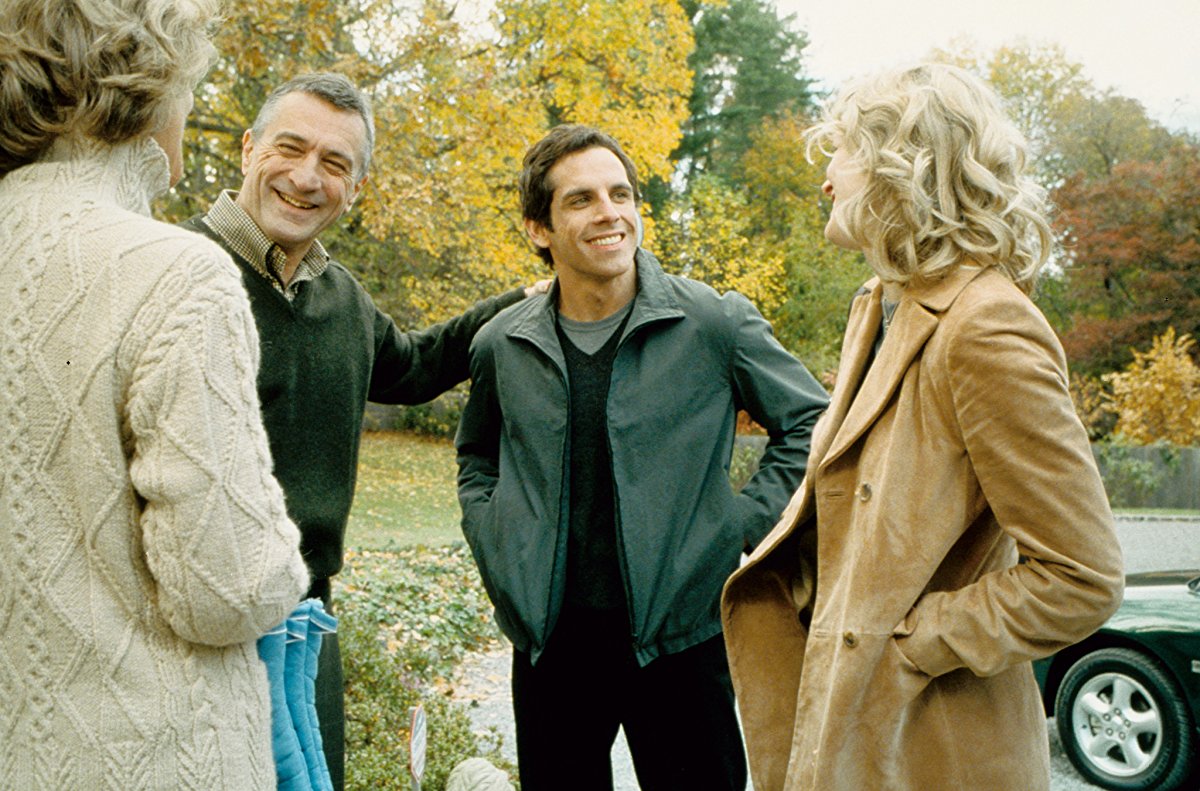
“Robert De Niro had made a movie called Analyze This [1999], and suddenly had a whole new renaissance as a comedy actor,” Soesbe recalls. “Our president of production at the time very shrewdly remembered [the 1992 version of Meet the Parents], which had been a student film, and asked De Niro about it. He became interested in the project, and pretty soon it was put into development. De Niro just seemed the perfect person to play that intimidating father.”
With the project placed on the fast track, in August 1999 Soesbe, who was then in his second stint in the story department at Universal, received the emergency assignment to take on the project. “I happened to be on vacation at the time, and I got a call,” Soesbe remembers. “It was before cell phones, so I had about 30 messages when I got home. I was supposed to do notes to try to help save this thing.”
Upon evaluating the screenplay by Jim Herzfeld, Soesbe made the determination that, while it successfully preserved many strong elements, the characters and the dialogue needed to be strengthened. Says Soesbe: “The script had incredible set pieces — very funny set pieces — but we needed to do additional work on it.”
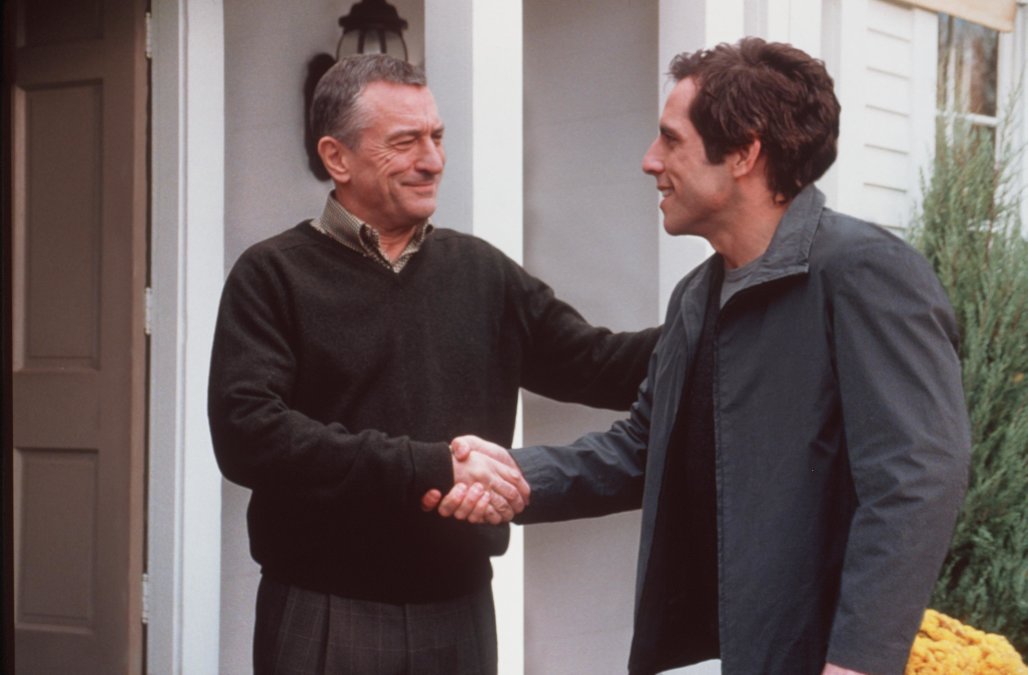
Soesbe was in a good position to judge: For much of his career, the native of Portland, Oregon, juggled his day job in studio story departments with his own work as a screenwriter; his credits include the made-for-television movies The Wrong Woman (1995) and Blind Terror (2001), as well as one of the last feature films to star Robin Williams, Boulevard (2014). “Having written movies, I know the equation from both sides,” Soesbe observes. “It can be very frustrating if you don’t agree with a studio, but that doesn’t necessarily mean they’re wrong. Ideally, the writer and the studio will come up with a compromised version.”
Following graduation from Portland State University, Soesbe relocated to Los Angeles, where he cycled through a series of temporary jobs before landing at Universal Studios in 1978. “I was a great typist, and in those days they had typists, and I got in as part of the typing squad,” Soesbe recalls. “We would sit in a room and they would assign us to go to a particular office and type for the day.”
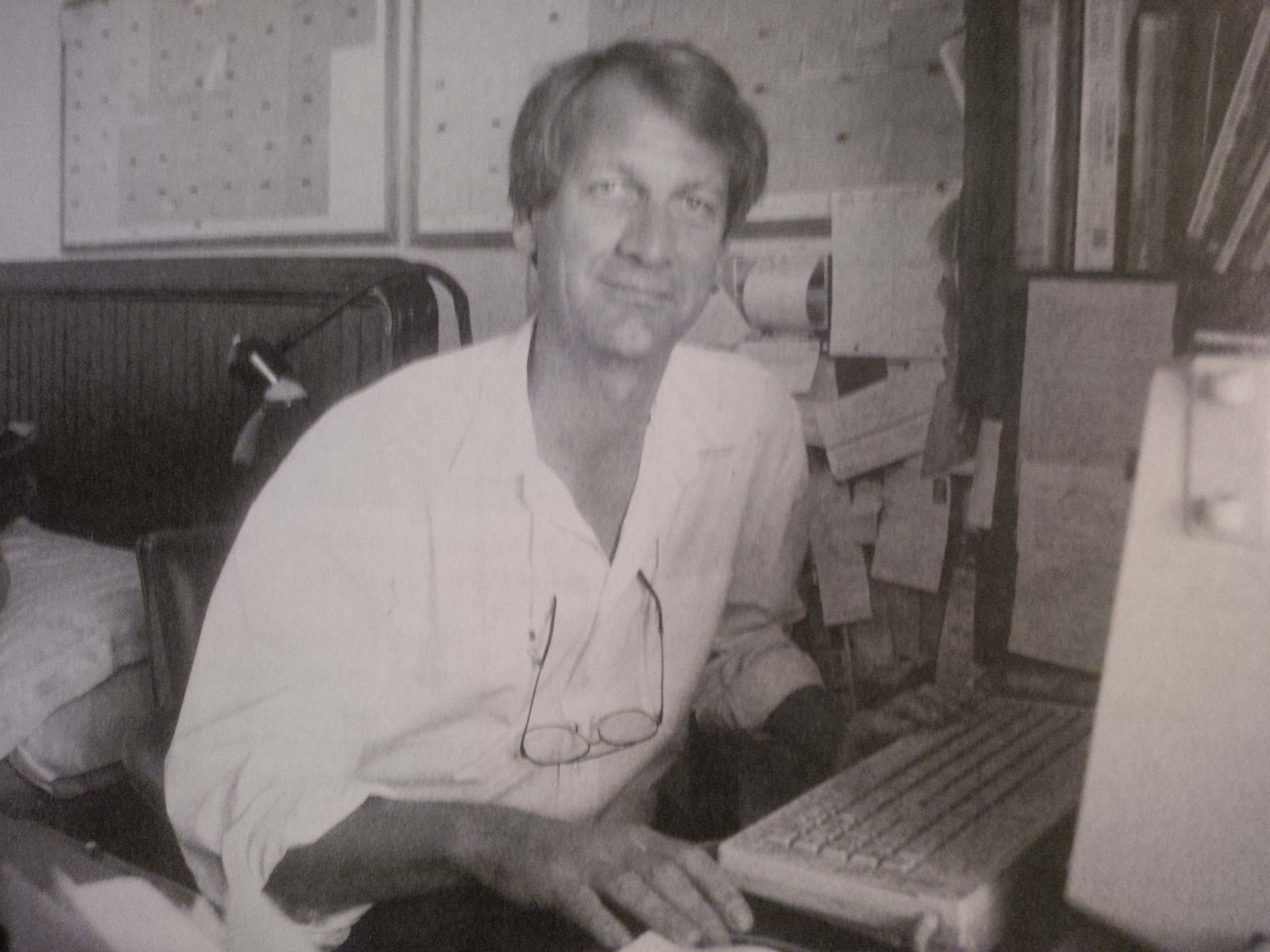
After his tour of duty in the stenography department, Soesbe joined the story department. “I knew about story departments from Sunset Boulevard [1950] and other movies,” Soesbe comments. “I thought, ‘Oh, wow, that’s where I should be.’ Eventually, I got in there as an assistant to the story editor and then became the story editor without ever having been a story analyst.”
In 1983, Soesbe departed Universal to join TriStar Pictures, where he transitioned from analyzing screenplays to crafting them. “The president of production at the time thought that I was doing so much with the notes, why don’t I just do the rewrite?” Soesbe says. “He gave me a three-picture rewriting deal.” In 1992, Soesbe left the studio to write his own screenplays, though several years later, he returned to story analysis. “I wrote four TV movies and one feature,” he says. “When TV movies kind of dried up in the early ’90s, I went back to story analyzing at TriStar, and then came back to Universal in 1997.”
Two years later, when Meet the Parents crossed his desk, Soesbe recognized both the merit, and the limitations, of the project. “It was very clear to me when I read the first draft that there was something here, but it just wasn’t coming together,” Soesbe says. “It was too broad. It’s such an incredibly relatable subject — everyone has a horror of meeting the in-laws — but the characters weren’t credible enough to make it really work.”
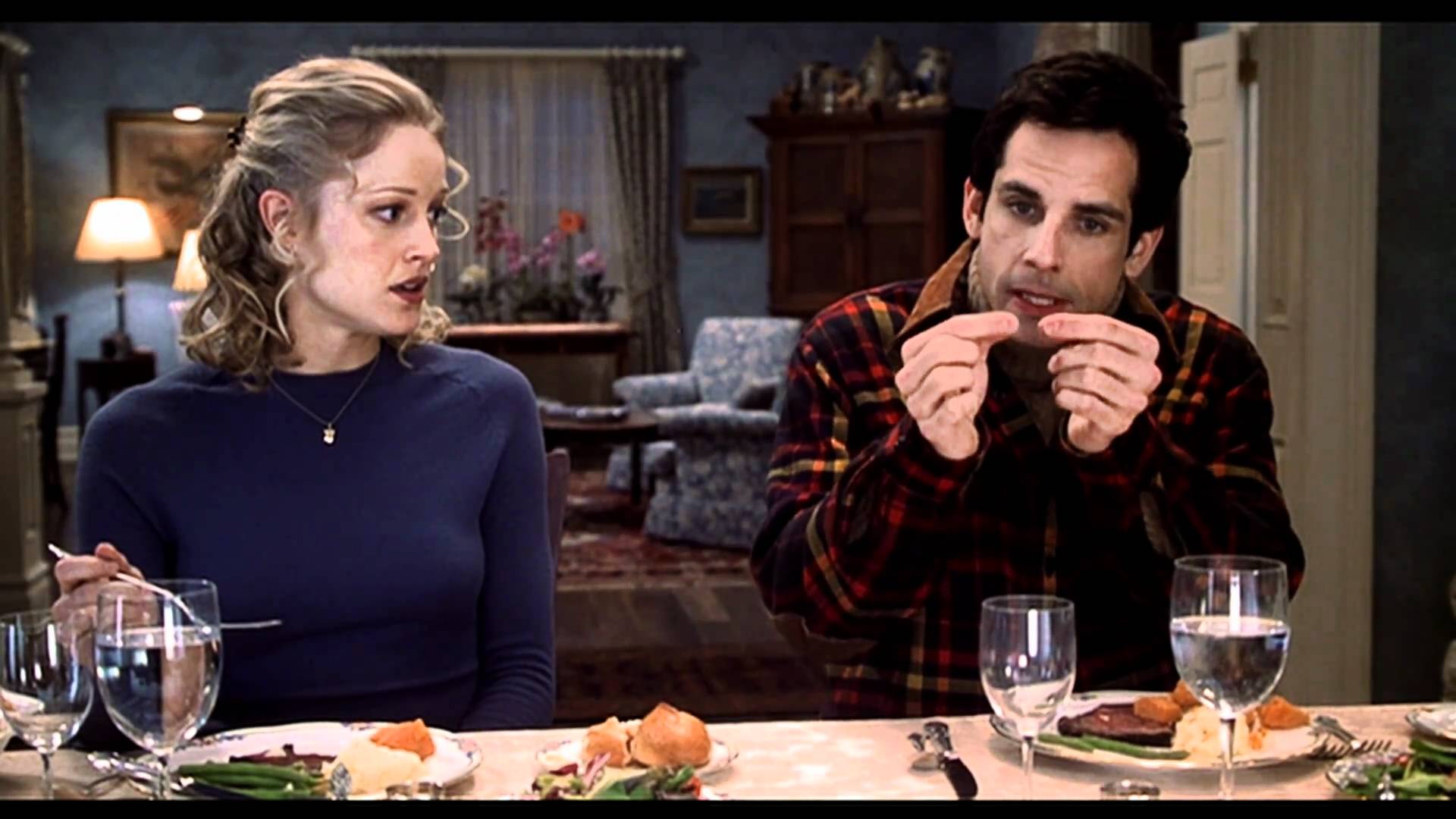
As Soesbe saw it, the set pieces had to be anchored to believable behavior. For example, consider the scene in which the urn housing the ashes of Jack’s mother plummets from a mantle — the gag is funny on its own, but the circumstances leading to it had to be properly established.
“How do they fall? Does he push them over? Do they fall off the mantle?” Soesbe asks. “Or the relationship between De Niro and [Jack’s wife] Blythe Danner. How much do you show of that? How happy are they? Are they unhappy? Is there a problem there? Since you’re dealing with real characters, in situations that people are going to relate to, you have to make those relationships clearer.”
Universal hired writer John Hamburg, who later worked on several other projects starring Stiller, including Zoolander (2001) and Along Came Polly (2004), as well as the sequels to Meet the Parents: Meet the Fockers (2004) and Little Fockers (2010). “He was a young writer,” Soesbe recalls, “but he just had a feel for this project. He’s from New York, and he knew a version of the Fockers.”
Based on Soesbe’s notes, as well as his own perceptions of the project, Hamburg turned around a rewrite in short order. “It seems to me that it was a matter of a few days,” Soesbe remembers. “It still wasn’t perfect, but it was working. He and I just seemed to click. We even talked on the phone sometimes, which is very unusual. He must have done about six or seven drafts.”

Because De Niro and Stiller were attached to the project, Hamburg had the advantage of writing with the stars in mind. “Once you know who the actor or actress is, and you have that person in your head, it’s a little easier,” Soesbe explains. “De Niro has this specific personality and style, so he can get a little broad and still be believable.”
During Soesbe’s back-and-forth with Hamburg, certain scenes remained vexing. How, for example, could the audience come to accept the sight of Jack subjecting Greg to a lie-detector test? “De Niro really helped enormously in that, not only because of his comic persona but the characters he’d played in the past,” Soesbe offers. “The idea of him hooking up his son-in-law to a literal lie detector is credible, whereas with any other actor, it might have been: ‘Oh, come on — is that too much?’ There was a lot of concern about it being too big and too broad, but it ended up being on the poster.”
As the start of production neared, filmmaker Alexander Payne — then best-known for co-writing and directing Election (1999) — was retained to do further work on the screenplay. “He did some terrific dialogue and character work,” Soesbe comments. “When you took those great set pieces, and then added John’s additional story, character work and funny lines, and then brought in Payne’s nuance, it really ended up being very special.”
Yet, as Soesbe describes it, the development process was especially rewarding because each new rewrite improved the project. “Sometimes, the writer is brought in and her or she thinks it’ll work, but it doesn’t,” Soesbe explains. “Then they bring in another writer and that is even less successful. Meet the Parents was a really wonderful example of good development because the writers were hired in a way that kept advancing the material. It just all came together.”
Soesbe, who stayed with the project throughout the shoot in the late fall of 1999 and early winter of 2000, remained with the franchise, serving as the story analyst on Meet the Fockers and Little Fockers, working with Hamburg on both films. “Movies don’t necessarily need a sequel, but you have to make one to get more revenue,” Soesbe says. “In this case, it worked because we’ve seen one set of parents and now want to see the other set. It was difficult coming up with the story. We were all over the place: ‘Do we do this? Do we do that?’ John, again, is to be credited for the story material, which ultimately worked really well.”
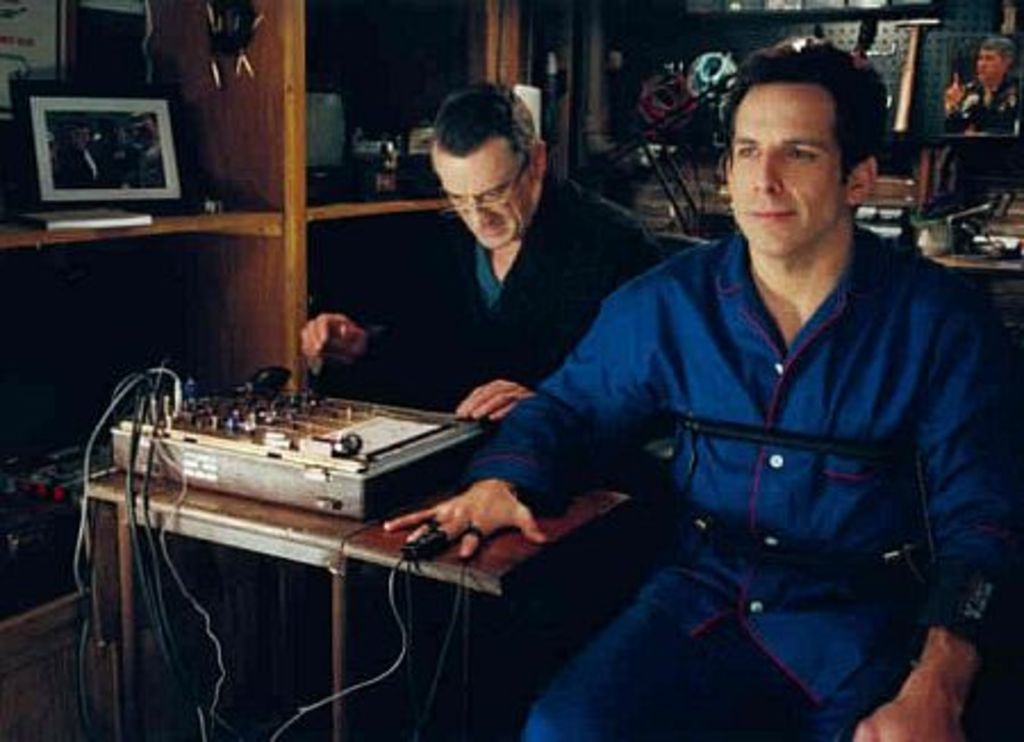
In the wake of the success of Meet the Parents and its offspring, Soesbe began working as the story analyst on an increasing number of comedies, including the films of Judd Apatow, who, like Hamburg, balances the broad with the believable. “When people make comedies, particularly raunchy comedies, they often get more attracted to the raunch and forget that these are human beings,” Soesbe observes. “Apatow never does that. He always makes sure that everything is grounded in a human emotion.”
Soesbe takes pride in his part in achieving that balance in Meet the Parents, though he is happy to remain behind the curtain. “When friends see movies that I’ve written, they see my name,” Soesbe says. “They say, ‘How come your name is not on Meet the Parents?’ Well, because I’m just a studio employee. We’re kind of invisible, but that’s okay. It just comes with the territory.”



